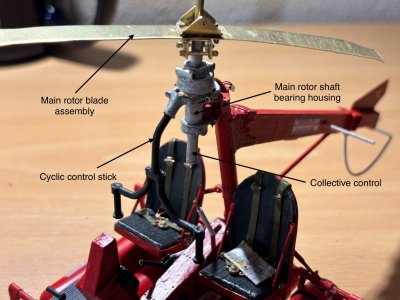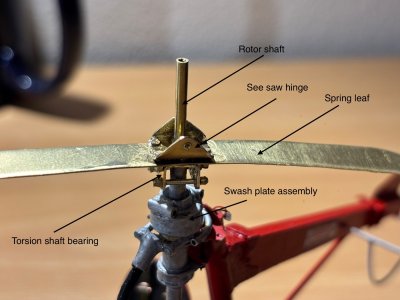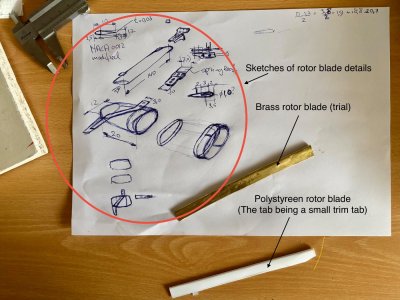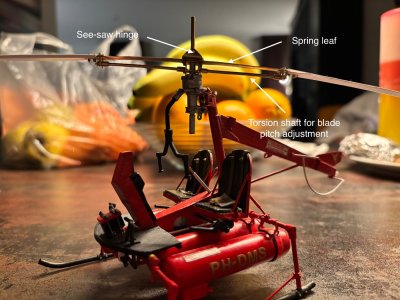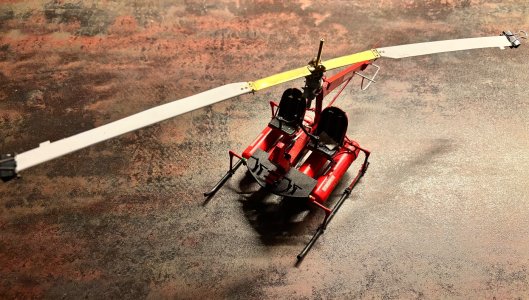Man-O-Man ……. When it is in your head and you made your sketches ….. then there is a solution. This looks so nice, Johan.The past week and half or so saw the earlier swash plate assembly flying into the dustbin and the build of a new one.
Using both solder and CA didn't yield the results I wanted, worse, BOTH means of attachment resulted in too many parts being permanently attached to one another...
That led to the build of a new swash plate assembly with a slightly adjusted design. This required quite a bit of time, including redo's of some parts (again), but tonight I finished the rough build of the swash plate assy, including the pilot controls.
I now could tentatively fit the assembly to the rotor head and, even if I say so myself, it looks very promising. Still a few more details to add, apply top coats and then assembly time!
(I can't get this picture upright...)
Overview with temporary install of the rotor shaft and the cyclic and collective controls.
View attachment 545243
Detail view of the rotor head and controls.
View attachment 545236
Regards, Peter




